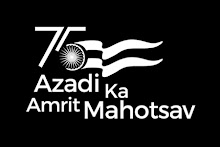

For many Tamilians, the festival of lights would refer to just one celebration — Karthigai deepam. And considering that many houses in Chennai are decked with beautiful ‘mann vilakus’ or earthen lamps, it is rightfully called so. “Usually north Indians light lamps for Diwali. We light lamps mainly for Karthigai deepam, which is considered to be an extension of Diwali,” says 57-year-old Seetha Sundaraman, who works at the Kuppusami Sastri Research Institute. “And I have celebrated it every year, ever since I got married,” she says. Like Sundaraman, many Chennaiites make sure they celebrate the festival. “Even if I am busy with my studies, I try to come home early so that we can go to the Kapaleeswarar temple in Mylapore. I make sure I light at least a few lamps. This year I am asking my mother to relax while I light the lamps,” says Nivedita, 21, a student of chartered accountancy. Karthigai deepam is observed on the full moon day of the Karthigai month (November/December), when the moon is said to be in alignment with the Karthigai star. The day is considered auspicious by Hindus for it symbolises the fire or ‘jyoti’ element of Lord Shiva. It is also believed by many to be the day when goddess Parvati combines all the six forms of Lord Muruga. The festival, originally observed through the whole Karthigai month, is now celebrated for three days in Chennai. On Thursday the Annamalai Deepam was celebrated with much fanfare in Thiruvannamalai, where a huge lamp is lit on the hilltop. In Chennai, small clay lamps in front of houses and on balconies of apartment buildings spread warmth and joy. The festival presents a beautiful sight in the evenings with homes resplendent with the sight of brightly-lit lamps. “My favourite part is seeing lamps being put out and lit in the evenings, it is beautiful. The light spreads such a warm glow,” says Nivedita. But for others, there’s more than just the beauty of the tiny lamps that makes this a festival to look forward to. Ramya Murugan, a software engineer, says it is the food and sweets she enjoys most. “My mother makes ‘pori urundas’ (puffed rice balls) which I absolutely love,” smiles Ramya, adding that though she lights a lamp with her family she is not really aware of its significance. With the setting sun painting a red hue in the sky and providing a dramatic backdrop and thousands of devotees loudly chanting ‘Om Nama Shivaya’, the ‘maha karthigai deepam’ was lit on top of the Tiruvannamalai hill on Thursday evening marking the start of karthigai festival. Believed to be one of the oldest rituals in the world, the Maha Karthigai deepam is the first to be lit atop the hill in a five-feet cauldron. It is only after the lamp is lit here that temples and people across Tamil Nadu light lamps on karthigai festival. This time too the ‘deepam’ was lit to the joy of devotees who gathered in the temple and around the hill but amidst unprecedented security arrangements. Devotees climbed up the hill to catch a glimpse of the light. The flame is said to be visible for over 10 kms around Tiruvannamalai. The cauldron, donated by Venkatesa Iyer of Mysore, is a big brass vessel designed in the form of a lamp and placed on top of the hill. It is filled with ghee and butter donated by devotees. An enormously thick wick made of loosely twisted woven fibres is immersed into the vessel and one end of the wick is drawn out. The lamp is lit around 6 pm when the full moon emerges from the east and appears on the horizon in the month of Karthigai. At the same time, in the temple, the idol of ‘Ardhanareeshwara’ is brought out in a ceremonial manner. “First idols of Lord Ganesha, Muruga, Arunachaleshwara and Unnamalai are brought in procession and kept inside the 16-pillored mandapam. Then exactly at 6 pm, Ardhanareeshwara is brought out and at the same time, the lamp is lit on top of the hill. A signal using a lamp is shown from the temple to synchronise the timing. Early in the morning the ‘Bharani’ deepam named after a star was lit,” said a temple official. Cutting across all religions, devotees make a beeline for the hill and ensure that the festival is celebrated with fervour. “Right from donation of ghee to making fireworks for the festival, people of all religions are involved. The lamp atop the hill also signifies one religion and one god,” said the official.




No comments:
Post a Comment